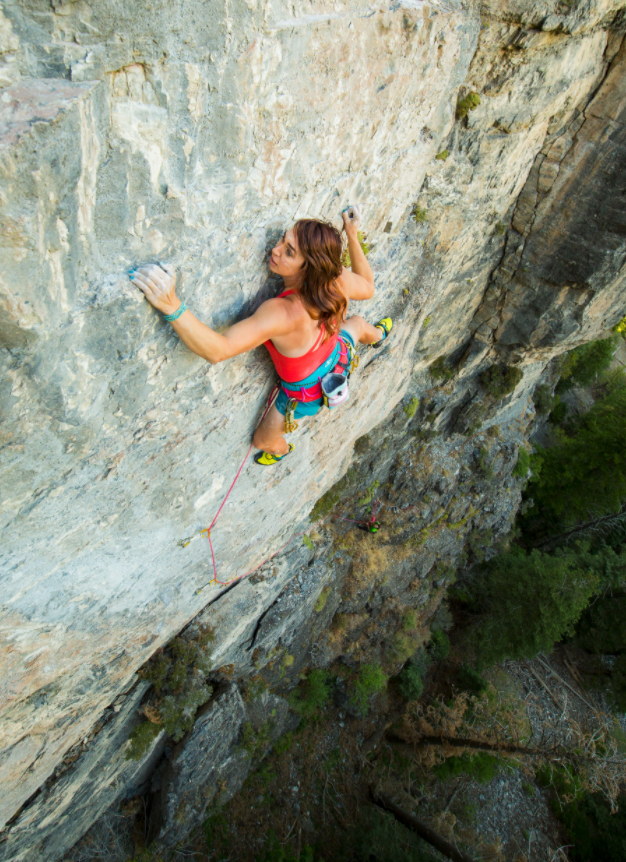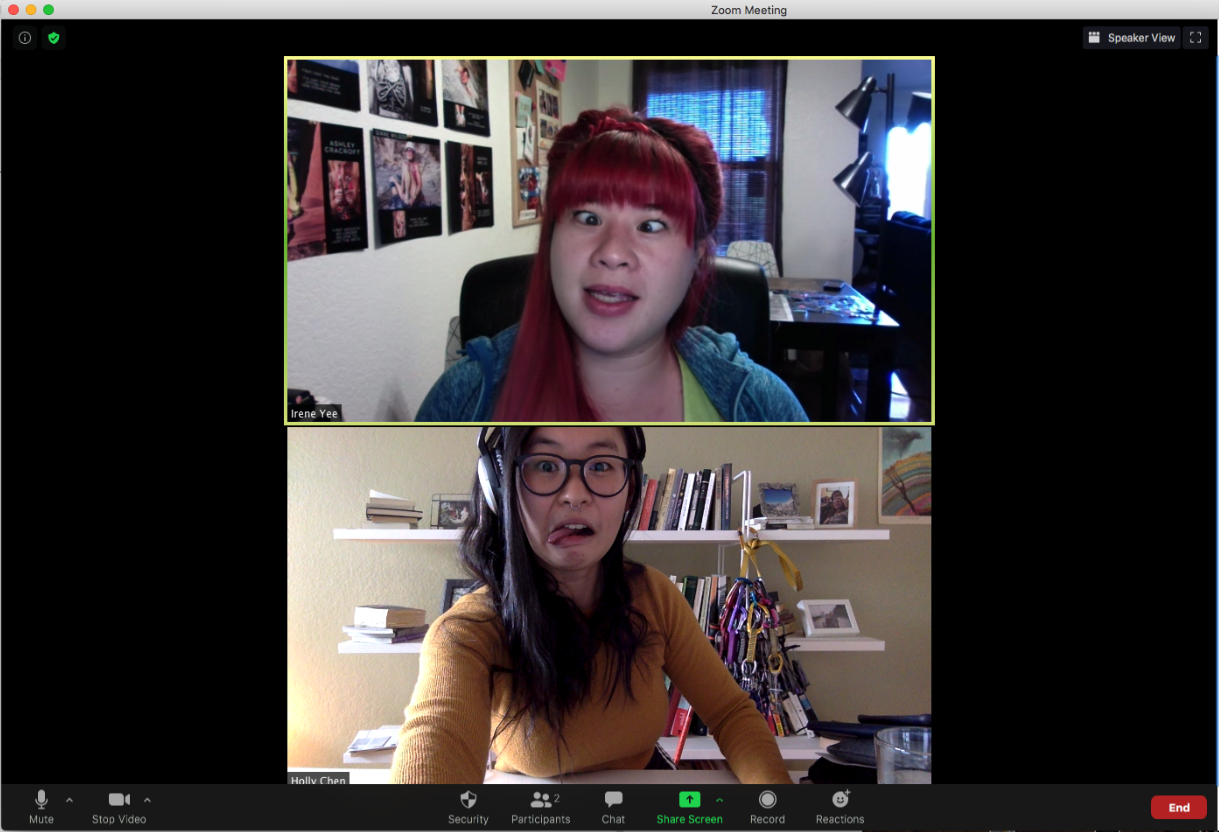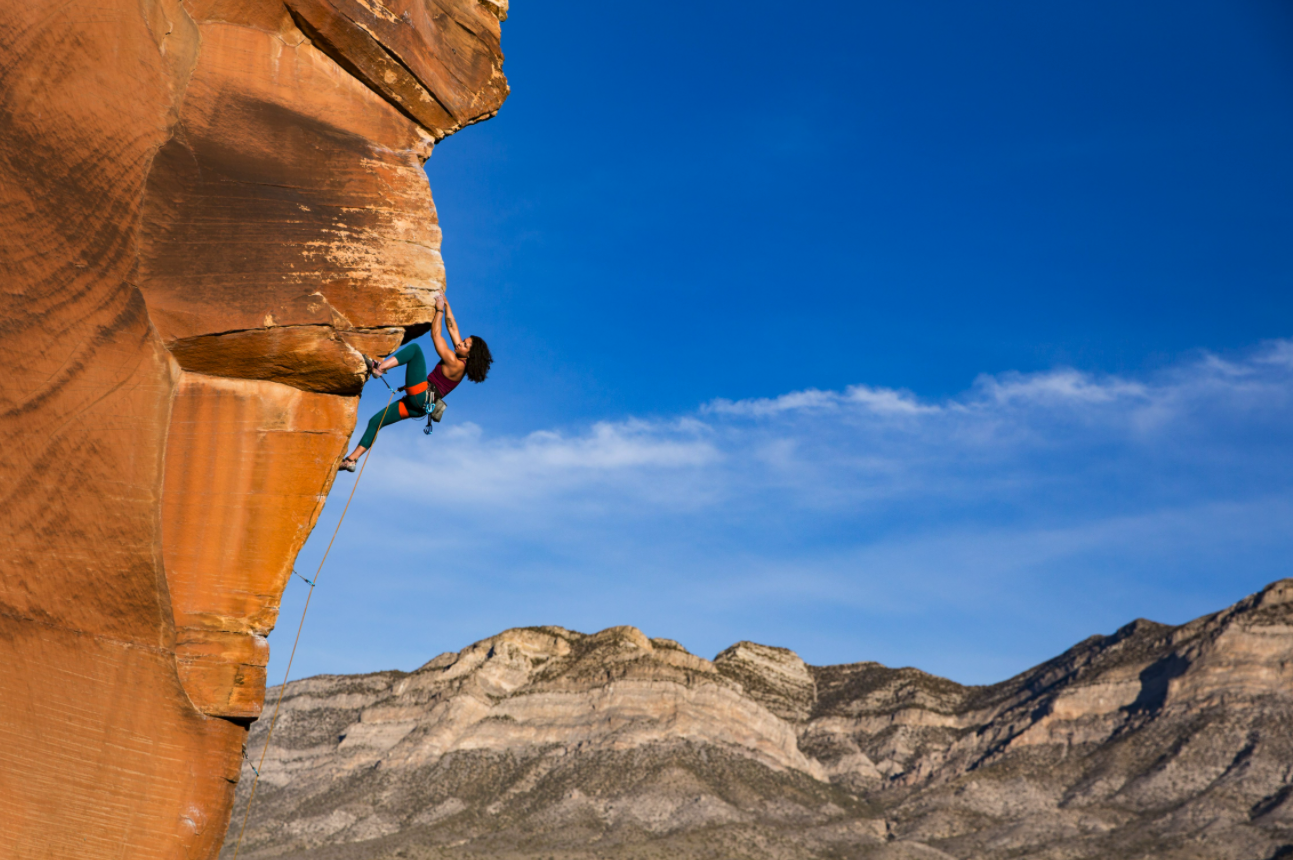Breaking the Mold | with Irene Yee & Cricket
Posted by Holly Yu Tung Chen on 13th Apr 2021
Hi, it’s Cricket here, and welcome to Cracking the Crag! This series is brought to you by––uh, nobody, we’re not fancy enough to have official sponsors. Nevertheless, I would like to give a special shoutout to Fred’s espresso maker. This series wouldn’t be here if it weren’t for that mighty machine.
Irene Yee, aka @LadyLockoff on Instagram, is a photographer who needs no introduction. Irene sat down with me over Zoom last winter. For interviews like these, I usually prepare questions and topics I’d like to touch on, but I closed my notebook and let the conversation go where it wants. It sure goes far.

2021 marks the third year Irene’s photography made it to the Women of Climbing Calendar pages. It’s no surprise why.
As someone with a limited understanding of photography, I often don’t know what makes photos good; I just know they are because I felt something when I see them. Irene’s photography reminds me of a memory. I was standing in an art museum with my mom in front of a painting in my early teens. It was a white lily in a moss green pond. Without warning, a surge of suppressed teenage angst, nightmares of middle-school crushes, and failed math tests bubbled to the surface. I was crying—in public! I wiped my face with my sleeve and hoped no one noticed.
Now, as a fully grown and (semi) functioning adult, I still don’t understand why the painting invoked those buried emotions. It is the same when I come across Irene’s photography, making me stop my endless scrolling, pause, and wonder.
“How do you choose your subjects?”
“The best emotions are the real ones. Not staged, not fake,” said Irene. I think the best way to capture that is to photograph people you’re comfortable with. Such emotions naturally happen because they’re comfortable with you.”
Irene describes how she loves photographing people who are “overly emotive,” she talks about how the big, loud, bold, and showboats are the most fun to photograph. As she says this, she flipped her bright red hair off her shoulder with a casual hand. Photographing her subjects is a balance of finding the natural moments and putting her subjects in positions where the ideal “natural” moments are more likely to happen.
“Have you always been a photographer?”
“No. I got into it about a year after I started climbing. My first photos were of myself on a time-lapse,” said Irene.
“Do you have any advice for an aspiring photographer?”
“Use what you have. Professional camera or iPhone, it doesn’t matter. Learn the skills first, because using it creatively is more important than anything else.”

I asked Irene whether she was ever uncomfortable photographing certain subjects.
“I’m bad at capturing vulnerability,” she replied. “I want to help them. I want to put down my camera because empathy takes over, and it can feel very uncomfortable to capture such exposed and raw emotions. Who wants a photograph of themselves with a snot-bubble?”
I couldn’t help but laugh, thinking back to the family photo albums where my mom seems to have a knack at capturing me in my worst, snot-bubble and all.
When I began climbing, I didn’t know any other Asian climber, and I always felt a little out of place until I opened Instagram and came across Irene. A girl who is unabashedly good at what she does, sporting a head of flaming red hair—I immediately felt a little more welcome in the community despite never having spoken to Irene yet.
Someone once said this about her, “Irene herself breaks the mold of a traditional rock climber,” I was curious about what Irene thought of this statement, so I asked.
She scoffed, “no one sets out to break tradition,” she said. “When I began a social media account, I didn’t see anyone who looked like me, and I didn’t think I could do things. When you don’t have the confidence of representation, this is what can happen in your internal dialogue.”
Irene described how images could have the power to change us by showing us experiences we never thought we could have. The rise of social media also gave rise to a vast platform that anyone can access, allowing us to be the person we could have used when we were younger. Become the person you needed when you were a teenager, figuring out your career in your early twenties, navigating parenthood, or assuming a new identity.
“Be the person you needed,” Irene repeated.

A distinctive aspect of Irene’s photography has always been her ability to capture what people needed to see in themselves. Her lens has always been a great advocate for diversifying the climbing space.
“What is your approach to understanding the perspective of climbers from different backgrounds?” I asked. This question marked a turning point in the interview because not long after her response, I closed my notebook, and the back-and-force nature of your typical interview turned into a conversation.
“Listening, and hard,” said Irene. “Listen and believe. The detail of somebody else’s story is often the biggest barrier in feeling included in a community. I’ve always worked in a male-dominated business, and maybe you’ve experienced it too—walking into the room and everyone looking at you because you’re the only woman. It’s a discomfort that sinks into you. Everybody notices you all day. So if you are someone who has never experienced this, you will not understand this. So it goes back to the original point. Listen, and listen hard. Trying to listen by understanding that somebody’s story is going to be vastly different from yours. Understand that you might never understand.”
The next question wasn’t scripted. “Does your understanding, or lack thereof, change the way you photograph your subject?”
“The goal is always to capture the person. So, no. A lot of what I thrive for is to remind those who I photograph: you are awesome,” Irene smiled, a big one.
“Do you think the understanding, or lack thereof, creates entry barriers for climbing? Or, more broadly, what are some of the bigger barriers facing the climbing community from going towards a more inclusive space?”

Irene threw both hands up in the air. “Everything!”
“Everything?”
“Everything is an entry barrier. You know, I used to refer to non-climbers as Muggles.”
That warranted a loud laugh from me, someone whose childhood was shaped by the Harry Potter franchise.
“This prevailing attitude that we are somehow better is a form of gatekeeping. Now, I don’t say that because we are not better. Everyone who wishes for a space in the climbing community deserves one. It’s not always about pushing the grade. Brands can forget that the cutting-edge ascents are not always relevant. For some folks, they need to be outside. The story of just continuing to climb is just as important as the story of 5.15. Inspire the young, but life doesn’t end at thirty.”
“Does this shape your photography work?”
“Of course, I’m following my voice,” said Irene. “I like to infuse my work with all the extra. Make it a point to find folks who don’t look like the folks who are already there.”
“Infuse it with all the extra. I like that,” I said. “Will you be submitting to the 2022 Women of Climbing Calendar?”
“Of course,” said Irene. “Can I send some over now?”
“Calm down.”
“No!”
Irene, where are you going next? The bigger question is, can we come too?

